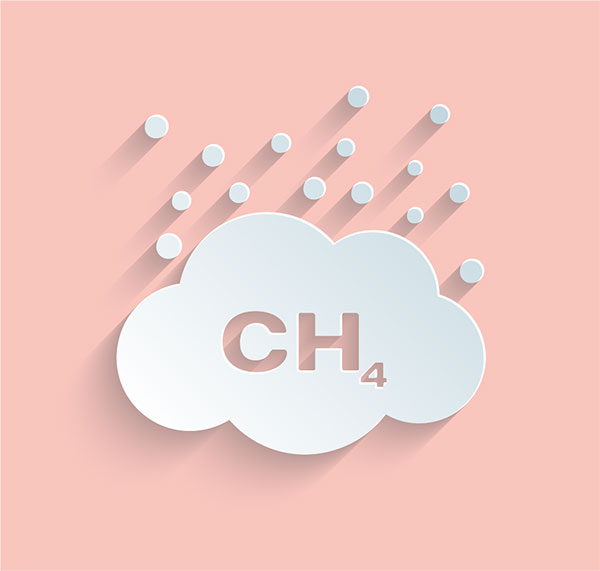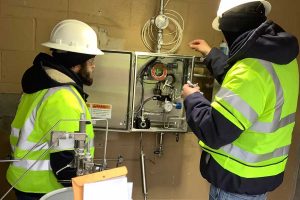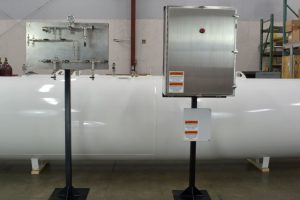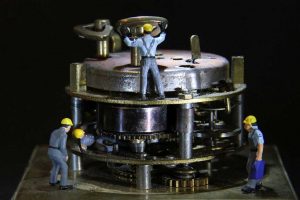About Gas Odorization

Natural gas (and propane) by itself is fragrance-free and combustible, a dangerous combination. If ignitable gases are left undetected by the nose, a dangerous and potentially disastrous condition is created. The impetus to add an odor (odorized natural gas) to gases was formed in 1937, when non-odorized natural gas ignited in a Texas school, killing over 200 children. Today, federal regulations mandate the odorization (49 CFR 192.625) of combustible gases so that an individual can detect the odorized gas by its odor.
This regulation mandates that, at all times, combustible gases must be detectable at one-fifth of the lower explosive limit by a person with an ordinary sense of smell. Studies showed that odorous chemicals (chemicals that stink) are the best warning agent. Subsequently, companies developed compounds or odorants to inject gas lines to act as a warning means, resulting in natural gas odorization.
To learn more about natural gas odorization, visit “What is natural gas odorization?”
Odorization FAQ
Everything you Never Knew you Wanted to Ask
Odorization is the process of injecting an odorant into gas to make it detectable to a person who has an ordinary sense of smell. Read More >
The odorizer or odorant injection system is the equipment that infuses odorant into a gas stream. There are chemical injection and chemical vaporization systems. GPL manufactures odorant injections systems.
The odorant is the compound or chemical, often mercaptan, that is injected into the gas to make it detectable with its scent.
How much odorant is added to natural gas? Natural Gas is odorized so that a person with a normal sense of smell can detect it at a concentration that is well below the explosive range. The level of odorant may change depending on the applicable local codes; however, an odorant concentration between 0.5 to 1.0 percent by volume is typical. Read More >
The lower explosive limit (LEL) is the lowest concentration (by percentage) of a gas or vapor in the air that can ignite in the presence of an ignition source. Below the LEL, the gas is too lean to burn. For methane, the primary gas of natural gas, the LEL is 5%. Likewise, the upper explosive limit (UEL) is the highest concentration (by percentage) of a gas or vapor in air that can ignite in the presence of an ignition source. The UEL for methane is 15%. When above the UEL, the gas is too rich to ignite.
Mercaptan is a toxic gas but when used at the appropriate levels to odorize gas there is no health risk. Read More >
Our Offerings
Through our GPL-authorized service provider, we offer our clients a one-stop acquisition experience, to ensure excellent service while minimizing oversight and scheduling challenges.
GPL Odorizers offers full packaged odorization skids with the odorizer, ASME odorant tank, and containment assemblies; in both vertical and horizontal tank configurations.
Given that our units are engineered with “redundancy” in mind, there are only a few replacement parts.
We strive to provide low maintenance, easy to operate and maintain odorizers.


